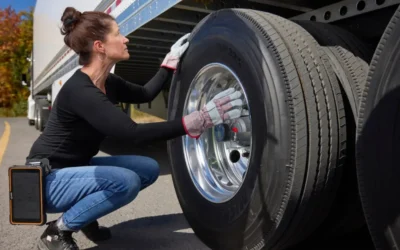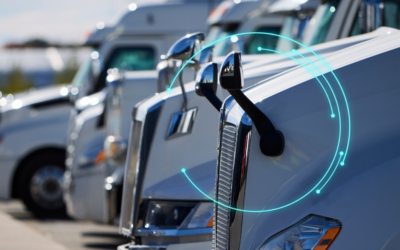There are several reasons to promote sustainability in your organization. Consumers prefer to buy from sustainable brands — 77% of buyers say they are influenced by a company’s environmental record — and businesses buy from sustainable suppliers to support their own green initiatives. In fact, there are several financial benefits to creating more sustainable products and investing in better operations. However, it can be difficult to know precisely where to begin with your sustainability efforts to reap these benefits.
Equipment management is one impactful way to make your business more sustainable. There are certain practices you should prioritize if you want to reduce waste and resource consumption. Use this guide to manage your facilities more effectively while tracking your results.
Accident Prevention
The National Safety Council (NSC) estimates that workplace injuries cost companies $167.0 billion per year. Some of the most common accidents include overexertion from employees pushing or pulling objects, falls, or getting struck by a falling object or piece of equipment. Roadway incidents account for more than 6% of workers’ compensation costs. This accounts for $3.59 billion annually.
Investing in machinery and fleet upkeep lowers these annual costs. It can also make your workplace more sustainable. For example, when a department has the resources to repair a cart, an employee is less likely to hurt themselves when they push it. This repair is more economically effective than replacing the cart entirely and also keeps the cart out of the landfill. Consider investing in more repair resources and training for staff so your equipment is safer and lasts longer.
Waste Reduction
Companies produce far more waste than consumers. Only 20 companies account for 55% of the world’s single-use plastic waste created — with 100 companies accounting for 90%. Not only do office workers create paper and plastic waste throughout the day, but the production of goods and services also generates waste in the form of unused materials and unwanted by-products.
Consider how you use your equipment and the byproducts created throughout your operations. Now might be a good time to invest in updated equipment that does more with less, creating less waste in the process.
Longer Equipment Lifespans
Maintaining any piece of equipment you own is important. Better equipment management means you don’t have to replace equipment as frequently. This ranges from the office printer to the most important and expensive machines in your warehouse.
When your equipment lasts longer, you send less waste to the landfill. You also significantly reduce your replacement costs. Simply put, the investment you put into maintenance will save you on repairs and replacements in the long run.
Strategies for Sustainable Equipment Management
As you invest in more sustainable efforts, you might notice that these changes make your company more efficient and profitable. One small change might not dramatically improve your company, but implementing a collection of efforts can add up and make a significant difference.
Here are a few strategies to consider if you want more sustainable equipment management.
Preventive Maintenance Programs
If your fleet management team has to constantly triage issues, you need a preventative maintenance program. Ultimately, prevention prevents panic.
For example, a good fleet maintenance program will reduce the amount of downtime in your fleet while empowering drivers to report issues before they become serious. A truck with worn-out tires is more of an accident threat than one with well-maintained and properly inflated wheels. Preventative maintenance can also keep your fleet moving by catching issues before they become serious and costly.
With preventative fleet maintenance practices, your team can be proactive instead of reactive. Your company can also become more sustainable by needing fewer replacement parts and extending the lifespan of your vehicles.
Fuel Efficiency Programs
There are factors of fuel consumption that are out of your hands, like the weather and route, but there are also plenty of factors that are within your organization’s control. A worker’s driving habits are one of the biggest determinants of fuel consumption — which means your employees can control your fuel costs and directly impact your sustainability efforts.
Consider implementing a fuel efficiency program within your company to cut back on the amount of fuel you need each month. Start with an improved driver coaching program. Teach your drivers how to navigate the roads in ways that minimize fuel waste. As your team builds good habits, invest in the right fuel management technology. Empower drivers to track their efficiency and offer rewards to the most efficient or most improved team members.
These efforts can also make your company more resilient because your profits won’t be as impacted by rising fuel costs.
Utilizing Telematics to Track and Optimize Equipment Performance
If you aren’t sure where to start with fleet management technology, look into electronic logging devices (ELDs) and telematics. ELDs are kept in each cab and make it easier for drivers to log hours of service, miles per gallon, and key information. Your team can then use this data to optimize fuel use. A telematics system continuously records the ride and flags any unsafe activity — like a hard break or harsh turn.
Fleet management software increases accountability in a way that paper logbooks cannot. Drivers know that they are monitored while on the route and can approach the ride more cautiously. This reduces their chances of getting into an accident and makes your company more sustainable by managing a fleet that drives more efficiently.
Enforcing Responsible Protocols for End-of-Life Equipment
End-of-life (EOL) equipment refers to machines and appliances that no longer support your company. They range from computers that are too outdated to use to trucks that can no longer be repaired.
You can increase the sustainability of your equipment management by following key best practices for recycling and disposing of these items. Decide whether you want to do this in-house with protocols for disassembling and recycling as much as possible or through a trusted, sustainably-focused vendor.
Remember, you aren’t just focused on the hardware disposal, but also on the chemical disposal for machines that use oil, ink, and other toxic substances.
Monitoring Regulatory Compliance
Sustainability is increasingly becoming an expectation of companies rather than an option. The Environmental Protection Agency (EPA) frequently shares laws with updated rules for companies to follow. Furthermore, laws issued by the European Union can have domestic ripple effects on American companies.
If you find that you need to prove that your company is acting sustainably, invest in compliance software for your fleet. This gives you tangible proof that your drivers are following state and federal guidelines for sustainability.
Sustainability is more than a company buzzword or regulatory requirement — it’s a core value that your entire company can embrace. Following these sustainable practices can lower your environmental impact, decrease your operating costs, and make your organization more resilient ahead of an uncertain future.









